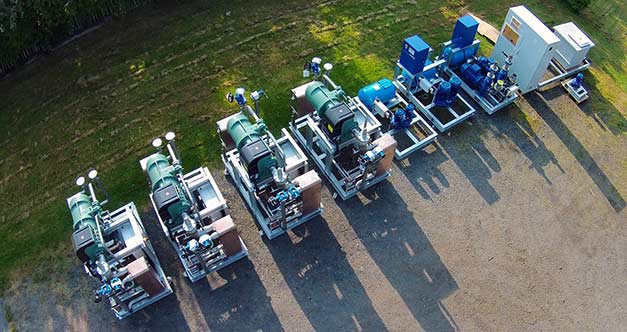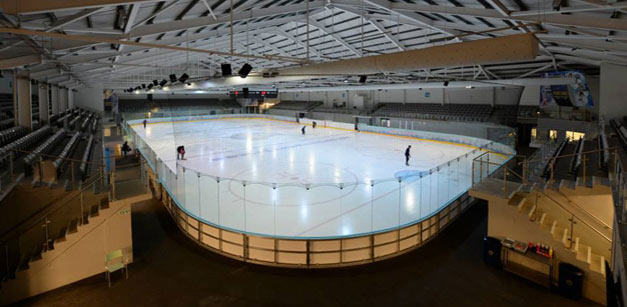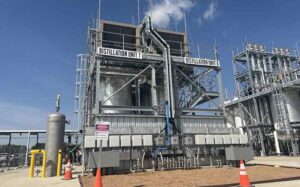Skating on thick ice with R134a
31st January 2016 UK: A new ice rink cooling system, unusually using R134a, is said to be saving end users thousands of pounds a month on energy costs.
UK: A new ice rink cooling system, unusually using R134a, is said to be saving end users thousands of pounds a month on energy costs.
The UK’s ice rinks are experiencing something of a renaissance, resulting in an increasing number of outdoor temporary rinks, a feature in many town centres this Christmas, and stimulating investment in refurbishment of the UK’s permanent rinks.
The energy required to create and maintain an ice pad is one of the most important elements in rink running costs. A new innovation, devised by Bedfordshire-based refrigeration contractor G&O Refrigeration with help from Bitzer UK, is claimed to be capable of halving cooling energy running costs compared with traditional refrigeration.
James Ogden, director and founder of G&O Refrigeration, has a unique insight into the requirements for ice rinks, as for many years he played ice hockey for Milton Keynes. (There is also a wider family connection, as his sister was a professional skater in the television series, Dancing on Ice.)
This knowledge of the sport combined with a solid grounding in refrigeration design and engineering has led the contractor to develop a new high efficiency approach to refrigeration for ice rinks, which is now helping to transform the economics of operating rinks.

The company’s new rink refrigeration plant, the Gorac chiller pack, is based on Bitzer CSVH compressors, and designed to deliver exceptionally reliable cooling and significantly reduced energy costs.
“These twin requirements – reliability and efficiency – are absolutely vital for ice rinks,” says James Ogden. “The packs have to run 365 days a year. A refrigeration breakdown can be catastrophic for revenue, as it can take days for the the ice to rebuild. Meanwhile, sporting fixtures may have to be cancelled and access for normal public use is unavailable.”
This was the reason the company selected Bitzer CSHV compressors to form the heart of its new approach to compressor pack design for rinks.
“The CSVH is a fairly recent addition to the Bitzer range, and is a very efficient, robust and reliable compact screw compressor. The key to its efficiency is an integral inverter which precisely controls the speed of the motor in line with cooling demand. This, coupled with the proven reliability of the established CSH series, gave us confidence that it would deliver on both efficiency and reliability fronts,” says James Ogden.
In addition to a built-in frequency inverter, the compressor has on-board protection and monitoring sensors, magnetic valves for regulation and coolant injection, in one pre-wired package.

The choice of compressor was something of a pioneering decision for G&O, as it was the first time Bitzer’s CSVH semi-hermetic had been used in ice rink applications.
James Ogden says: “They operate on R134a, which is normally associated with medium temperature applications, such as commercial air conditioning. However, the performance envelope is surprisingly wide, and we were attracted by the fact they can evaporate down to -17ºC, at a suction pressure of 0.5bar.”
A pack replacement project at Milton Keynes rink carried out by G&O has reduced the previous energy bills of £11,000 a month by between £4,000-5,000 a month. Subsequent projects have confirmed average savings of between 45%-50%, the company claims.
Following the success, the company has now produced 10 Gorac packs for use in rinks across the UK. In addition to Milton Keynes, they have been installed at rinks in Hemel Hempstead, Swindon and Cardiff. This latter project is the largest to date, with two ice pads on site.
The company is attracting the attention of overseas ice rink operators, and is involved in supporting projects taking place in mainland Europe.








